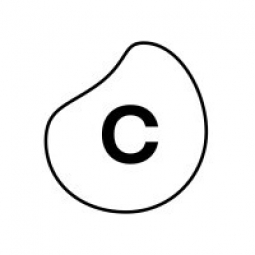技术
- 传感器 - 流量计
- 传感器 - 液体检测传感器
适用行业
- 医疗保健和医院
- 生命科学
用例
- 库存管理
- 实时定位系统 (RTLS)
关于客户
GE Healthcare 是医疗技术和数字解决方案领域的全球领导者。该公司采用数据驱动的方法来实现创新和效率,旨在简化日常运营并在竞争激烈的市场中释放营运资金。 GE Healthcare 拥有遍布全球的客户和分布式供应链,面临着跨多个交易系统实现性能最大化的挑战。公司致力于在各个层面上持续改进,专注于小规模、有针对性的变革和渐进式增长,以推动更好的成果。
挑战
GE Healthcare 是医疗技术和数字解决方案领域的全球领导者,面临着最大限度提高全球客户群和分布式供应链绩效的挑战。该公司正在处理多个交易系统,因此很难将各个点连接起来并简化运营。目标是增加自由现金流并推动卓越现金文化,但实现这一目标需要组织各个层面的持续改进。面临的挑战是实施小规模、有针对性的变革和增量增长,而不是自上而下的指令,以提高预测准确性并防止应付账款中的错误付款。
解决方案
GE Healthcare 转向 Celonis 执行管理系统 (EMS) 来推动更好的结果。该公司采取了小规模、有针对性的变革并促进增量增长的战略。这包括每周对财务估算与实际支付情况进行审查。这些看似微小的调整带来了重大突破,提高了预测准确性,并每周防止应付账款中约一千笔错误付款。该公司还注重明确的目标设定,确定所需的产出,以促进所有部门和部门的集体参与。此外,GE Healthcare 不再将数据驱动的变革视为一次性举措,而是将 Celonis 生成的客观见解和改进机会的评估和实施整合到日常工作中。
运营影响
数量效益

Case Study missing?
Start adding your own!
Register with your work email and create a new case study profile for your business.
相关案例.

Case Study
Hospital Inventory Management
The hospital supply chain team is responsible for ensuring that the right medical supplies are readily available to clinicians when and where needed, and to do so in the most efficient manner possible. However, many of the systems and processes in use at the cancer center for supply chain management were not best suited to support these goals. Barcoding technology, a commonly used method for inventory management of medical supplies, is labor intensive, time consuming, does not provide real-time visibility into inventory levels and can be prone to error. Consequently, the lack of accurate and real-time visibility into inventory levels across multiple supply rooms in multiple hospital facilities creates additional inefficiency in the system causing over-ordering, hoarding, and wasted supplies. Other sources of waste and cost were also identified as candidates for improvement. Existing systems and processes did not provide adequate security for high-cost inventory within the hospital, which was another driver of cost. A lack of visibility into expiration dates for supplies resulted in supplies being wasted due to past expiry dates. Storage of supplies was also a key consideration given the location of the cancer center’s facilities in a dense urban setting, where space is always at a premium. In order to address the challenges outlined above, the hospital sought a solution that would provide real-time inventory information with high levels of accuracy, reduce the level of manual effort required and enable data driven decision making to ensure that the right supplies were readily available to clinicians in the right location at the right time.

Case Study
Gas Pipeline Monitoring System for Hospitals
This system integrator focuses on providing centralized gas pipeline monitoring systems for hospitals. The service they provide makes it possible for hospitals to reduce both maintenance and labor costs. Since hospitals may not have an existing network suitable for this type of system, GPRS communication provides an easy and ready-to-use solution for remote, distributed monitoring systems System Requirements - GPRS communication - Seamless connection with SCADA software - Simple, front-end control capability - Expandable I/O channels - Combine AI, DI, and DO channels

Case Study
Driving Digital Transformations for Vitro Diagnostic Medical Devices
Diagnostic devices play a vital role in helping to improve healthcare delivery. In fact, an estimated 60 percent of the world’s medical decisions are made with support from in vitrodiagnostics (IVD) solutions, such as those provided by Roche Diagnostics, an industry leader. As the demand for medical diagnostic services grows rapidly in hospitals and clinics across China, so does the market for IVD solutions. In addition, the typically high cost of these diagnostic devices means that comprehensive post-sales services are needed. Wanteed to improve three portions of thr IVD:1. Remotely monitor and manage IVD devices as fixed assets.2. Optimizing device availability with predictive maintenance.3. Recommending the best IVD solution for a customer’s needs.

Case Study
HaemoCloud Global Blood Management System
1) Deliver a connected digital product system to protect and increase the differentiated value of Haemonetics blood and plasma solutions. 2) Improve patient outcomes by increasing the efficiency of blood supply flows. 3) Navigate and satisfy a complex web of global regulatory compliance requirements. 4) Reduce costly and labor-intensive maintenance procedures.

Case Study
Cloud-based healthcare solution for Royal Philips
Royal Philips wanted to launch its cloud-based healthcare solution HealthSuite Digital Platform in China to deliver services to help cope with challenges related to urbanization and population growth. Philips wanted to achieve this goal by combining mobile, cloud computing and big data technologies. To bring this platform and product to market, Philips required cloud computing and local technical service capabilities in China, in addition to a flexible IT infrastructure that could handle user requests.








